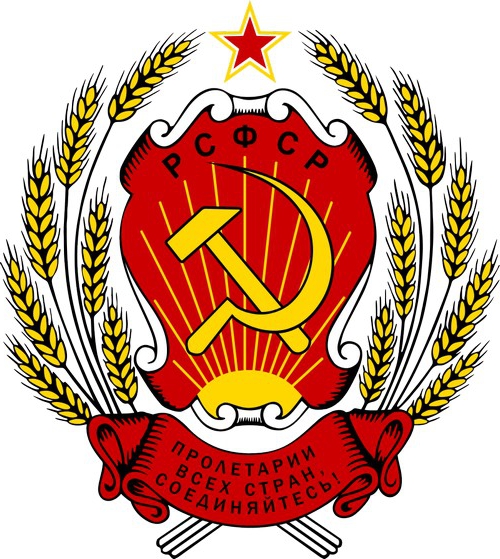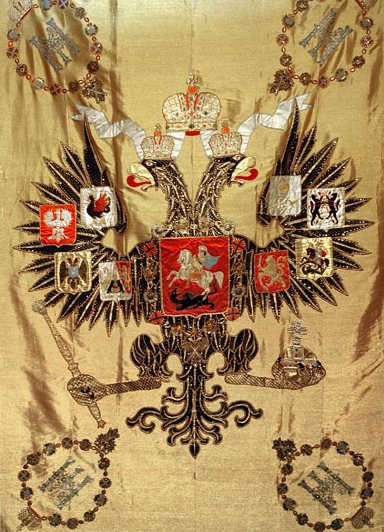The symbol of any state expresses the sovereignty of the country, the unity of the people. It is not only an object of national pride, but also has practical significance. The symbol of the state is placed on banknotes, coins, letterheads, seals and other places where necessary. 
World practice
In each country, in one or another historical period, the question of state symbolism inevitably arose. Country insignia should represent sovereignty, regardless of the change of dynasties and governments. In states where the monarchical form of government, Symbols have not changed since ancient times. Such countries, for example, include Spain, Denmark, Luxembourg, the UK. A number of republics do the same: Poland, Hungary, Bulgaria, and so on. However, there are also countries in which monarchist symbolism is not used in principle. So, for example, in Italy, France, it is replaced by a new, more modern one.
Names of state symbols
In Russia, there are three main signs:
- Emblem.
- Anthem.
- Flag.
The symbol of the state must have official status. This means that it must be not only well-known, but also approved at the government level. For example, what is not a symbol of the state at the official level? Everyone knows the Volga River. It can act as a symbol of the state, but at the national level. Or, for example, the Kremlin. Its image can be found quite often, but it is not used on official documents, international treaties. The same applies to other countries. So, for example, the coins of France depict a female figure personifying the state. Another traditional sign of this country is the Gallic rooster. Clover leaf is a famous symbol of Ireland. Eiffel Tower, Colosseum, Tower Bridge, the Congress Building in America are also considered national signs. 
Symbol of the formation of a unified Moscow state
After the separation of Kievan Rus, a conglomerate of independent principalities was formed. They did not have their own symbolism. Nevertheless, the princes used a certain set of images on coins and seals. These signs were called to magnify their power and authority. Most often these were images of animals: lions, griffins, eagles, and so on. Church symbols were quite common at that time. Often it was possible to meet images of Christ, various saints, the Mother of God, the cross.
From the end of the 15th century, the active formation of a single centralized state began. In this regard, it became necessary to create a new symbol. He was primarily to reflect the unity of the country, as well as personify the power of the great Moscow prince, who was called the Tsar from 1547. A two-headed eagle became such a sign at that distant time. It was first used in 1497 and was present on the seal of Ivan the Third. After the reforms of Peter, who first proclaimed himself emperor, other symbols of the Moscow state appeared. The appearance of the eagle, as well as its color, has been slightly changed. Subsequently, it was periodically updated. Peter first introduced the naval and trade flags. They existed until the Revolution of 1917. The emblem of the country, the two-headed eagle, also survived until the Bolsheviks arrived.
Soviet time

The Bolsheviks who came to power did their best to emphasize the break with the past, with all the attributes of the monarchist system. This also affected heraldry. In this regard, in the USSR, not a single symbol of the state had any connection with previous signs. Emblems of labor: ears, hammer and sickle became distinctive signs.The flag of the state turned red, it depicted a five-pointed star, personifying the victory of communism on all five continents. After the collapse of the Union, the question arose again about the distinguishing marks of the country. As a result, the former symbols of the Russian state returned - a white-blue-red banner and a coat of arms with an eagle. The latter has only changed colors.
Emblem
All symbols of the state of Russia have a certain meaning. This also concerns the coat of arms of the country. First of all, it should be said that this identification mark is compiled in accordance with certain heraldic rules. This symbol of the state is a combination of shapes and colors. The emblem performs the function of identifying a country using visual means. Simply put, this symbol of the state has the same purpose as the name. Only the latter is a verbal form, and the coat of arms is pictorial. 
The legislative framework
The Constitution is the main regulatory document in the Russian Federation. It established that there are certain symbols of the Russian state. The emblem also applies to them. The law establishes rules for the use of this symbol. In fulfillment of the norms provided for in the constitutional provision on the country's coat of arms, various legal acts - Federal regulations, Orders and Decrees of the President, resolutions of federal bodies regulate and clarify various issues regarding the use of the state coat of arms and its protection. Modern legislation on this symbol has existed since 1993. Throughout the entire period of its existence, it is constantly supplemented and improved.
Banner
The flag of the state is a material sign. It looks like a piece of fabric or other material that can flutter in the wind. The flag has a specific shape and color. In Russia, a combination of three colors is used - white, blue and red. They are shown in horizontal stripes. A distinctive feature of the flag is that it is intended for use in open space and should be recognized at a considerable distance. 
History reference
After the elections of people's deputies were held in March 1990, the Democratic Russia movement formed a Commission. She prepared draft constitutional amendments and the Declaration of Sovereignty. Among the proposed adjustments was a change in the national flag. In the new edition of Art. 181 it was assumed that it would be a three-color cloth with the same horizontal stripes in width: scarlet - lower, blue - medium, white - upper. However, at the Congress, these amendments were not adopted. By a majority of votes, the deputies decided to remove the new flags installed on the tables of some people's deputies. In the press at that time they were called "royal symbolism."
In November 1990, the RFSR Council of Ministers adopted a resolution on the organization of work on the formation of new symbols of the country. This task was assigned to the Committee on Archival Affairs. Based on the results of the consideration of the proposals, it was recommended to restore the three-color panel. However, it was decided to introduce draft laws into the armed forces until the completion of the presidential election campaign. Accordingly, during July and August 1991, the proposed description of the Russian flag, a white-blue-red banner, was included in the draft new Constitution.
Regulatory framework
The main legislative acts on the state flag of the Russian Federation are the Constitution and the Federal Law. They approve it and establish the procedure for its use. As in the case of the emblem, legislation has existed since 1991, is supplemented and improved throughout the entire period. 
Anthem
It is a musical symbol of the state. Melody and words are inextricably linked with the socio-political system of the country.It is intended for identification by musical means. In the country's system of symbols, the anthem occupies a special place. It is considered the most accessible for the population and the most understandable sign. It is not always possible to use the emblem or flag, the name of the country sounds differently in different languages. The anthem is always in the memory of a person; he knows and remembers the melody and words. If it is necessary to demonstrate nationality, a citizen can do this by playing the national anthem. 
Legislation
The main regulatory documents that govern the use and protection of the anthem are the provisions of the Constitution and the relevant Federal Law. Various legal acts, including decrees and orders of the President, Government Decisions and other regulations, clarify and regulate all issues relating to the anthem, as well as its protection.